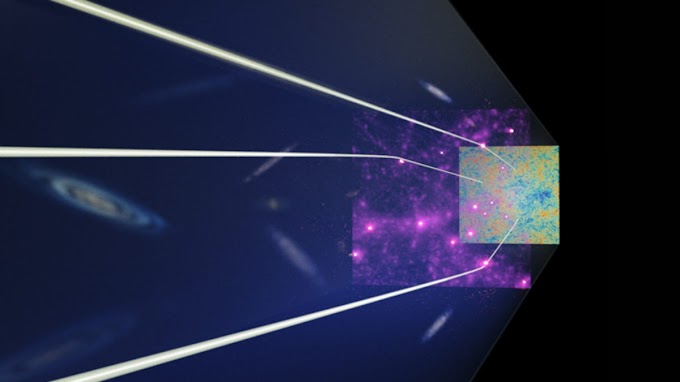The world remains reeling from the release of the James Webb Space Telescope's (JWST) first photographs. These provided a comprehensive evaluate of the kind of science operations that Webb will conduct over its 20-12 months assignment. They included the maximum sensitive and specified examine some iconic astronomical items, spectra from an exoplanet ecosystem, and a deep area view of some of the most distant galaxies inside the universe. Since their release, we've additionally been handled to glimpses of objects within the solar machine captured through Webb's infrared contraptions.
 |
| Pic taken from : NASA |
Meanwhile, the JWST collaboration released a full report titled titled "Characterization of JWST technological know-how performance from commissioning," wherein they examined the whole thing Webb has achieved to this point and what they anticipate throughout the mission. This paper these days appeared on-line and covers the whole lot from the telescope's navigation and pointing to the performance of its many contraptions. An exciting tidbit, which changed into now not formerly released, is how Webb suffered a chain of micrometeoroid influences, one in all which prompted "uncorrectable change" in one replicate phase.
The crew at the back of this observe blanketed researchers from the three participating area agencies—NASA, the European Space Agency (ESA), and the Canadian Space Agency (CSA)—and from the task's many partner agencies. These encompass the Space Telescope Science Institute (STScI), the Niels Bohr Institute, the Max-Planck-Institut für Astronomie (MPIA), the UK Astronomy Technology Centre (UK ATC), the National Research Council Canada (NRCC), the Instituto Nacional de Técnica Aeroespacial (INTA), the Centro de Astrobiología (CAB), and plenty of aerospace organizations, universities, research institutes, and groups worldwide.
 |
| Pic taken from : NASA |
The paper they compiled assesses the JWST performance during the six-month commissioning period before it entered provider on July 12th, 2022. This consisted of characterizing the observatory's on-orbit overall performance, the JWST's layout and structure, and the pre-release predicted performance. These were then compared to the performance of the spacecraft, telescopes, science units, and floor device. Section 4 of the Report, Optical Performance, addresses how Webb's various contraptions functioned at some point of the commissioning period.
The JWST's primary reflect consists of eighteen hexagonal segments arranged in a honeycomb configuration. Each phase is composed of gold-plated beryllium, and all are aligned to ensure the highest decision and sensitivity possible. The standard overall performance is measured in terms of Wavefront Error (WFE), which refers to how light gathered by using the telescope's mirrors deviates from the expected wavelength of mild. The overall extent is decided by calculating the amassed mild's deviation from the Root-Mean-Square (RMS) error—the spherical average of the complete wavefront.
This is expressed mathematically the usage of the gadgets of the unique wavelength, measured in nanometers (nm) whilst managing Infrared wavelengths. Section four.7 addresses micrometeoroid impacts and their capability impact on Webb's lengthy-term optical overall performance. The evaluation starts by way of reminding readers that any spacecraft will unavoidably encounter micrometeoroids, then lists how numerous affects had been anticipated throughout the commissioning length:
 |
| Pic taken from : NASA |
"During commissioning, wavefront sensing recorded six localized floor deformations on the number one mirror which can be attributed to impact with the aid of micrometeoroids. These happened at a fee (kind of one according to month) constant with pre-release expectancies. Each micrometeoroid caused degradation within the wavefront of the impacted reflect segment, as measured throughout everyday wavefront sensing. Some of the resulting wavefront degradation is correctable through everyday wavefront manipulate; some of it comprises high spatial frequency terms that cannot be corrected."
They further suggest that those micrometeoroid influences had been detected up to now via wavefront sensing. Five of the six detected influences had negligible outcomes, contributing to a blended general of much less than 1 nanometer to the general wavefront error. However, the remaining effect, which occurred among May twenty second and May twenty fourth, brought on a "significant uncorrectable trade" in the usual discern of segment C3. This segment is placed on the lower proper side of Webb's primary reflect (while visible from the front), and the effect is illustrated inside the Report (see photograph above).
Luckily, the overall impact turned into small on the grounds that best a small part of the telescope region changed into suffering from it. The task teams also conducted realignment steps to accurate for the effect, which delivered the telescope alignment to at the least fifty nine nm RMS, which is about five to 10 nm above the preceding satisfactory wavefront blunders RMS values. The authors of the Report also cross on to note that "drifts and balance ranges" within the telescope usually bring about a "telescope contribution" of among 60 (minimal) to eighty nm RMS—at which point, wavefront control is usually carried out.
 |
| Pic taken from : NASA |
They also explain that it is unknown at the moment whether or no longer the May 2022 effect to segment C3 turned into rare or something that may be anticipated to occur regularly during JWST's venture. As they country, that is essential if the JWST undertaking groups desire to determine if the telescope may be more liable to damage with the aid of micrometeoroids than pre-release modeling predicted:
"The undertaking team is accomplishing extra investigations into the micrometeoroid populace, how influences have an effect on beryllium mirrors, and the efficacy and performance tradeoffs of potential mitigations along with pointing regulations that could decrease time spent searching inside the route of orbital movement, which statistically has better micrometeoroid fees and energies."
To summarize, the impact at the C3 section raised concerns among the mission controllers. But the upside is that it was not anything they couldn't cope with and isn't always anticipated to have an effect on Webb's lengthy-term technological know-how operations. As the Report summarizes: "The key outcome of six months of commissioning is that this: JWST is completely able to accomplishing the discoveries for which it changed into constructed. JWST turned into envisioned 'to enable essential breakthroughs in our expertise of the formation and evolution of galaxies, stars, and planetary structures'… we now understand with fact that it's going to. The telescope and tool suite have tested the sensitivity, balance, picture pleasant, and spectral range which can be vital to transform our understanding of the cosmos via observations spanning from close to-earth asteroids to the most distant galaxies."
 |
| Pic taken from : NASA |
Moreover, the Report's authors conclude that the JWST's overall performance has been better than predicted, nearly across the entire board. In phrases of the optical alignment of its mirrors, the point unfold feature, the time-stability of its imaging, and the great steering device that factors the observatory, Webb has passed expectations. They additionally indicate that the mirrors are cleaner, and the science devices have generally supplied higher total gadget throughput than pre-launch expectations. All of this provides as much as some optimistic appraisals:
"Collectively, these factors translate into substantially better sensitivity for most tool modes than became assumed in the publicity time calculator for Cycle 1 observation planning, in lots of cases through tens of percentage. In most cases, JWST will cross deeper faster than predicted. In addition, JWST has enough propellant on board to closing at the least two decades."
 |
| Pic taken from : NASA |
The JWST Collaboration said that similarly info will be supplied in a planned collection of papers. These will appear in a special issue of the Publications of the Astronomical Society of the Pacific (PASP) devoted to the JWST.
All the pictures used here, are taken from NASA .










